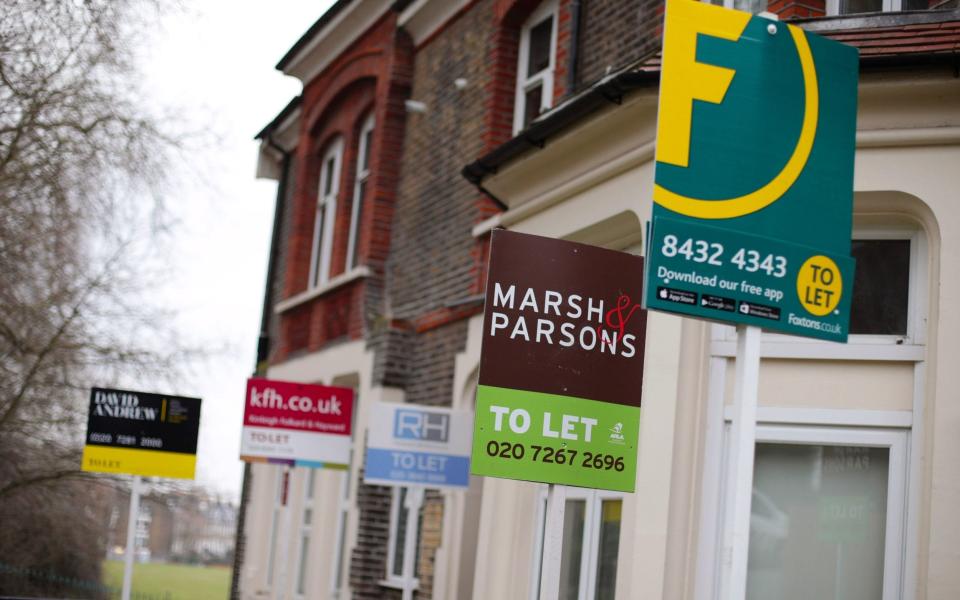Tax and red tape forcing landlords to sell up, warns Bank of England

The Bank of England has sounded the alarm over a worsening crisis in the rental market as high taxes and red tape forces landlords to sell up.
In its Monetary Policy Report published on Thursday, the Bank said demand for rental properties has continued to outstrip supply as “the number of landlords choosing to exit the market increased”.
Landlords have blamed a combination of factors, according to conversations held by the Bank, including “tax and regulation, higher maintenance and borrowing costs, and an inability to recoup increased costs in rents”.
The Bank’s Monetary Policy Committee raised the Bank Rate for the tenth consecutive time on Thursday to 4pc, a 0.5 basis point increase.
Successive rate rises have meant that the average quoted rate for a new buy-to-let mortgage has jumped from 2.8pc in December 2021 to 5.95pc at the start of February, according to data experts Moneyfacts.
For a landlord with a £150,000, interest-only loan, this would mean monthly payments would more than double from £350 to £743.
Landlords have been demanding record rents to meet soaring costs, but increases are now hitting a ceiling of affordability. Official data shows that rents across all private UK tenancies jumped by 4.2pc year-on-year in December – the highest rate recorded since data set began in 2016.
Ben Beadle, chief executive of the National Residential Landlords Association, said tax changes had amplified the blow of higher mortgage costs for buy-to-let owners.
He added: “Landlords have nowhere to go with higher rates. Renters face a supply crisis and the problem is taxation.”
Landlords have been hit by tax changes announced by former chancellor George Osborne in 2015, which came into full effect in April 2020.
Instead of being able to offset all of their mortgage interest against income calculations for their tax bill, landlords can now only offset a 20pc of this. This means that landlords must still pay the same amount of income tax, even if their mortgage costs wipe out all of their profits.
Meanwhile, Chancellor Jeremy Hunt has halved the capital gains tax-free allowance for landlords, from £12,300 to £6,000 from April 2023 and then in half again from April 2024.
Mr Beadle said that owning a buy-to-let portfolio will become “simply unviable” for many landlords.
He added: “One of my buy-to-let mortgages expires in November. Based on yesterday’s rates, my mortgage rate will increase from 3.86pc to 8.15pc.”
Landlords are also worried about looming regulatory changes. The Government plans to introduce minimum Energy Performance Certificate requirements that could cost £10,000 per property.
Furthermore, Michael Gove, the Housing Secretary, is preparing to scrap Section 21 “no-fault” evictions. This means that landlords will need to prove tenant wrong-doing in the courts, which are beset with delays.
An estimated 365,000 buy-to-let properties will become loss-making by the end of 2023, as high mortgage rates hit landlords on variable rates and those coming to the end of fixed-rate mortgage deals, according to Capital Economics.
The Bank of England warning came as Santander forecast that house prices will fall by a tenth this year and said it was preparing for a rise in mortgage and loan defaults.
The high street lender said it expects UK house prices to fall back to 2021 levels in 2023 as rising interest rates hit demand for mortgage lending.
The UK arm of the Spanish bank also set aside £321m to cover bad loans as it warned that Britain is likely to face a recession, which could see customers fall into arrears.
The European Central Bank has vowed to persist with its most aggressive round of tightening ever, as it lifted interest rates by half a percentage point to 2.5pc, the highest levels since 2008.
ECB President Christine Lagarde said there would likely be at least one more outsized raise to come, despite both the Fed and the Bank of England signalling a slowdown.
“We know that we have ground to cover. We know that we’re not done,” she said.

 Yahoo Finance
Yahoo Finance 